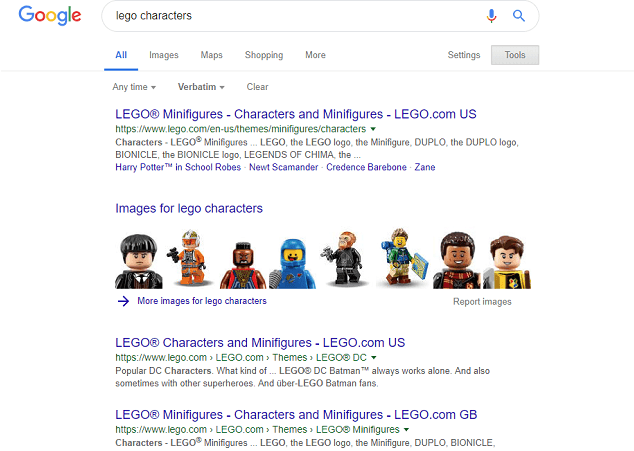Title tags are one of the primary focus for the most bloggers. They are those HTML elements that are created to tell visitors and search engines of the content of a webpage. Title tags usually appear in SERPs and when the blog articles are shared on social media. And that’s why they are so important.
- They are the shortest way of attracting a user’s attention and making them click the link to land on your page/article. And it helps boost your traffic to that page as a result.
- A good title tag that includes a brand/business/blogger name in it helps make that name recognizable.
The title tag shouldn’t be confused with H1 tag – your actual article title that is displayed on a page. They both can be the same text. But if they are different, then Google will show your title tag in search results. On your page, the title tag is shown in the browser tab.

So, how do you create a perfect title tag that people would like to click? Here are a few actionable tips.
Choose a Target Keyword
Most pages don’t rank for a single keyword; they can rank for tons of other semantically close phrases. Studies show that #1 page ranks for over 1,000 relevant keywords. But still, when you are to create a title tag, you should choose one primary keyword to target.
First, check out the keyword you’re about to include in your title tag in your favorite keyword tool. Check out the SERP and see if the results are relevant to that keyword. Sometimes you may notice that the results are a bit different from what you’re trying to convey with your article.
Thus, the top 10 results for “lego characters” will show mostly links to shopping sites, and your article about Lego characters from the latest Lego Movie will be most likely irrelevant to that search query.

After you find the best keyword to target, you may want to get a couple of long-tail keyword variants to add. Long-tail keywords are easier to rank for if you’re a small business or blog. Despite their low search volume, long-tails are more specific and attract a more targeted audience.
Thus, for the article about coffee drinks, you may check out for the terms that include the phrase “coffee drinks” and various additional words, like “types of,” “easiest” or “best.”
Craft a Draft for the Title
There are a few rules to draft a raw title tag for your article:
- It should be descriptive. Your title should clearly describe what your post is about and be relevant to the user’s search intent for a chosen keyword.
- It should be short. Google cuts titles and snippets that are longer than a certain amount of pixels. Usually, it means that the title shouldn’t be longer than 50-60 characters to avoid truncation.
- Include your target keyword along with some long-tail variations.
The easiest way to draft a title is combining the target keyword and its long-tail variations. Thus, for a coffee drinks article, it may be “Healthy Coffee Drinks” or “Low-Carb Coffee Drinks.”
By the way, it doesn’t mean you should put the exact keyword phrase in your title. Google’s Hummingbird algorithm is smart enough to understand its semantic variants.
Take a step further and craft some catchy titles like “Coffee Drinks for Healthy Morning Routine” or “Healthy Versions of Coffee Drinks.” Remember, your primary goal for a good title is its descriptiveness and relevancy.
Make It Unique
What makes a perfect title tag and sets it apart from the average results? It describes a unique opportunity and offers something that other results don’t.
Make it clear for your potential readers what they find within your content. Here are a few ideas:
- People love list posts. Consider including numbers into your title, e.g. “10+ Healthy Coffee Drinks Recipes.”
- Readers look for in-depth research on the topic. Add to the title words “ultimate,” “all-in-one,” “thorough guide,” “step-by-step,” e.g., “Step-by-Step Guide for Making Healthy Coffee Drink.”
- No one will click the title that offers “2015 guide” when it’s 2019 already. Make sure you offer the freshest info and show it in the title by adding the words “latest,” “newest,” and the current/upcoming year, like “The 2019 Guide for Coffee Drinks Recipes.”
- In some cases, people don’t expect in-depth guides. They just need their issues to be solved quickly. If you offer that kind of solution in your article, show it in the title tag. Use words like “short,” “brief,” “quick,” “in XX hours/minutes/days.”
- If you’re in the Ecommerce niche, make sure you offer your customers the best prices. It works for blog posts too. Thus, you may create a list article with the cheapest hotels in Europe. In that case, your title tag may look like “10+ Cheapest Hotels in Barcelona to Stay in 2019.”
As you see from the latter example, you can easily combine those “unique” words in one title tag to attract a wider audience.
Do A/B Testing
Even the best title tags (in your opinion) may not work the way you think. That’s why you should test them and choose the one that performs the best.
Change the title after 2-3 weeks to test the performance. Check out your Google Search Console for the CTR of a given title. You may test the title length, the keyword placement or the impact of additional words like numbers, current year or emotional adjectives.
Even if the title tag doesn’t improve your rankings, it’s the outstanding way of interacting with users. And the better this interaction is the more clicks and traffic your blog gets what may improve your rankings in its turn. Agree? Share your thoughts in comments!
Author bio:

Helen Stark is a content marketer at Ahrefs. She explores new things every day to impress her readers with catchy stories. Apart from all that marketing stuff, Helen loves listening to rock music, reading and traveling. A lot! Feel free to follow Helen on Twitter.












